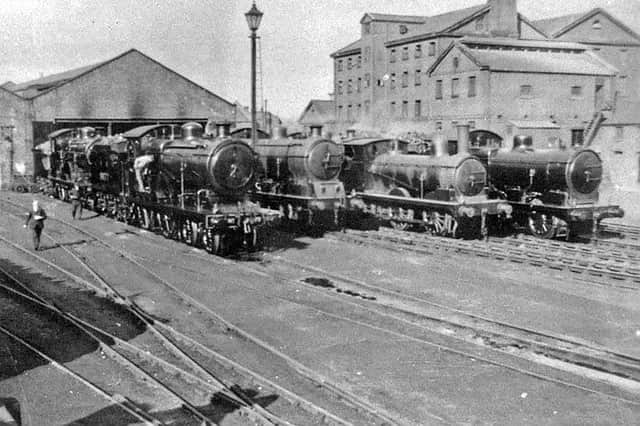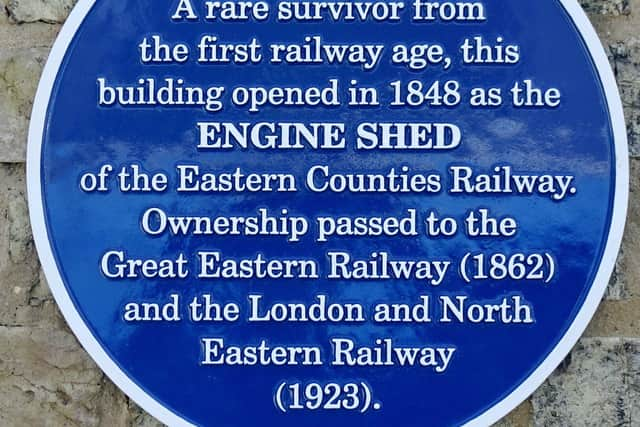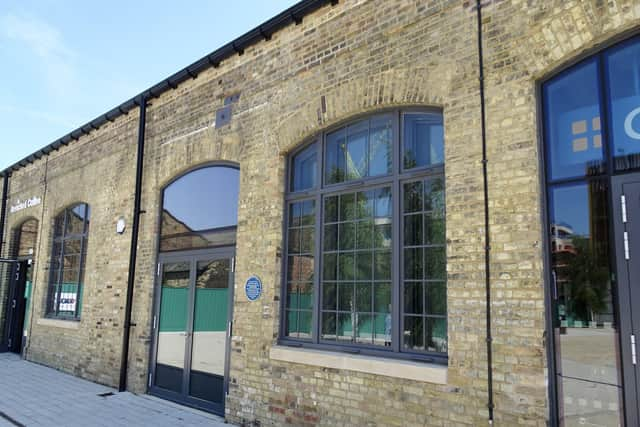Remembering Peterborough’s railway glory years


This plaque is located at Fletton Quays, on the western wall of Sand Martin House, between Bewiched and Greggs cafes.
At the heart of the Fletton Quays development can be found a heritage success story of which the architects, developers, and city council can be proud.
Advertisement
Hide AdAdvertisement
Hide AdThe project concerned is the restoration of the Victorian railway engine shed, which forms part of the city council’s new offices at Sand Martin House. This outcome is especially creditable given that this building, despite having listed status, had fallen into a deplorable state of dereliction.


Construction of the shed commenced in 1848 for joint use by the Eastern Counties Railway (ECR) and the Midland Railway. It is thus a rare survivor from the earliest period of railway development.
The facility included the shed itself, which was brick built with six tracks, plus water tanks able to hold 72,000 gallons. In addition, there were offices, stores, a coaling stage, turntable, water crane and workshops for carrying out locomotive repairs.
The Midland Railway built its own shed at Spital Bridge in 1872, leaving the ECR, by then transformed into the Great Eastern Railway (GER), in sole possession. The GER kept about 40 locomotives at the shed.
Advertisement
Hide AdAdvertisement
Hide AdThese operated passenger services to Ely and further into East Anglia, and also to King’s Lynn via Wisbech. Goods services were more important, with coal and manufactured goods flowing east from the Midlands and North of England and agricultural produce from the eastern counties flowing westwards.


A fine photograph (above) from about 1923 shows GER engines lined up outside the shed. The presence of so many engines “on shed” suggests that this photo may have been taken on a Sunday. The two locos on the left are express passenger engines of the Claud Hamilton class, with three goods engines visible on the right.
The year 1923 was important in the history of the shed because in that year the GER was absorbed into the new London and North Eastern Railway (LNER). The LNER owned the much larger New England shed, which received additional investment. It also developed the great marshalling yard and engine shed at March (Whitemoor), which took over much of the traffic from Peterborough East. It was therefore only a matter of time before the East engine shed closed, which happened in 1939.
Railway use of the building continued for carriage repairs and storage for a further 20 years, but after 1960 British Rail leased it for light industrial use. Inevitably, with very little maintenance taking place, its condition deteriorated, despite receiving Grade II listing in 1992.
Advertisement
Hide AdAdvertisement
Hide AdIt later had to be vacated completely and suffered an arson attack in 2007. It was only in the nick of time that first the East of England Development Agency and then the city council were able to rescue it.
Fortunately, many of the original internal features remain in place as well as the exterior structure. The long-term future of this fine building should now be assured.
Thanks are also due to local author Peter Waszak, whose article in the Peterborough Local History Society Magazine for October 2019 was the source of much of the information quoted above.
Further details about all the plaques can be found in the accompanying 28-page booklet which can be ordered on the Society’s website at a price of £2 per copy (to cover postage and packing). A download of the booklet is available on the society’s website.